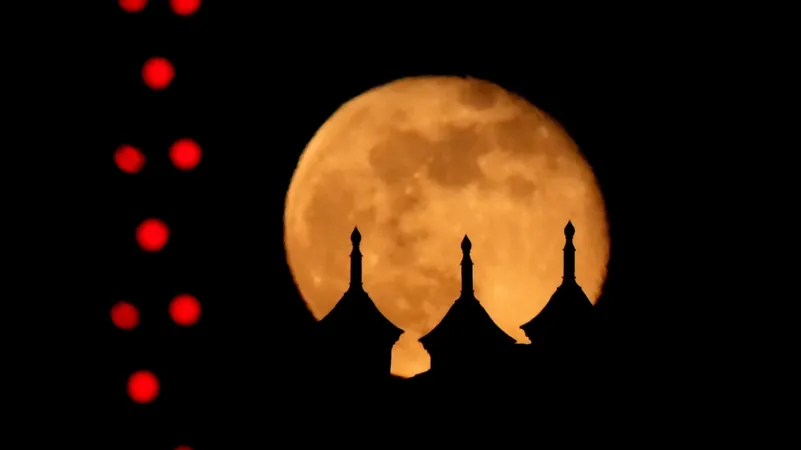
The Winter Solstice Has Arrived: Embrace the Longest Night of the Year!
2024-12-23
Author: Jacques
The Winter Solstice Is Upon Us!
The winter solstice is upon us this Saturday, marking the arrival of the shortest day and longest night in the Northern Hemisphere. This time of year is perfect for cozy evenings warmed by blankets and illuminated by festive holiday lights!
For those craving more sunlight, consider a trip to the Southern Hemisphere, where the sun shines bright in summer. Alternatively, hang in there! Starting this Sunday, the days will gradually lengthen until we reach the summer solstice in late June.
The concept of solstices has fascinated humanity for centuries. Ancient structures like Stonehenge in England and the Torreon at Machu Picchu in Peru were meticulously designed to align with the solstices, showcasing the significance people placed on these astronomical events.
Understanding the Solstice: A Cosmic Dance
But what exactly is a solstice? As the Earth orbits the sun, it is tilted on its axis. This tilt causes the sun’s rays to shine more directly on one hemisphere at a time, creating a stark contrast in day length and sunlight. The solstices are the points in the year when this tilt is at its peak — effectively making the day lengths unequal between the two hemispheres.
During the Northern Hemisphere’s winter solstice, the upper half of our planet tilts away from the sun, resulting in the infamous shortest day. This phenomenon typically occurs between December 20 and 23. On the flip side, we have the summer solstice, when the Northern Hemisphere basks in the sun, creating the longest day and shortest night — usually occurring between June 20 and 22.
What About the Equinox?
Equinoxes, on the other hand, are when both hemispheres receive roughly equal sunlight. The term “equinox” is derived from Latin, meaning “equal night.” During these times, day and night are almost equal in length, though slight variations exist depending on geographical location. The vernal equinox in spring typically falls between March 19 and 21, while the autumnal equinox occurs between September 21 and 24.
The Seasons Explained: Meteorological vs. Astronomical
When it comes to defining seasons, there are two main methods: meteorological and astronomical. Meteorological seasons are based on weather patterns, neatly dividing the year into four three-month seasons rather than aligning with the Earth's position in relation to the sun. According to this system, winter starts on December 1 and ends February 28 (or 29).
Conversely, astronomical seasons focus on Earth’s alignment with the sun—solstices signal the start of summer and winter, while equinoxes indicate the transition between spring and autumn.
As we prepare to embrace the enchantment of the winter solstice, let's cherish the beauty of the season. Remember, from here on out, brighter days are just around the corner!









 Brasil (PT)
Brasil (PT)
 Canada (EN)
Canada (EN)
 Chile (ES)
Chile (ES)
 España (ES)
España (ES)
 France (FR)
France (FR)
 Hong Kong (EN)
Hong Kong (EN)
 Italia (IT)
Italia (IT)
 日本 (JA)
日本 (JA)
 Magyarország (HU)
Magyarország (HU)
 Norge (NO)
Norge (NO)
 Polska (PL)
Polska (PL)
 Schweiz (DE)
Schweiz (DE)
 Singapore (EN)
Singapore (EN)
 Sverige (SV)
Sverige (SV)
 Suomi (FI)
Suomi (FI)
 Türkiye (TR)
Türkiye (TR)